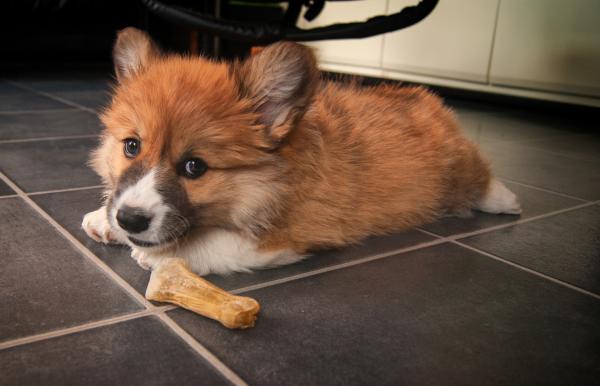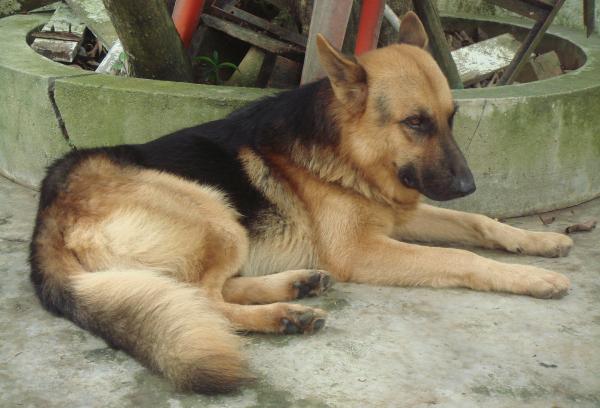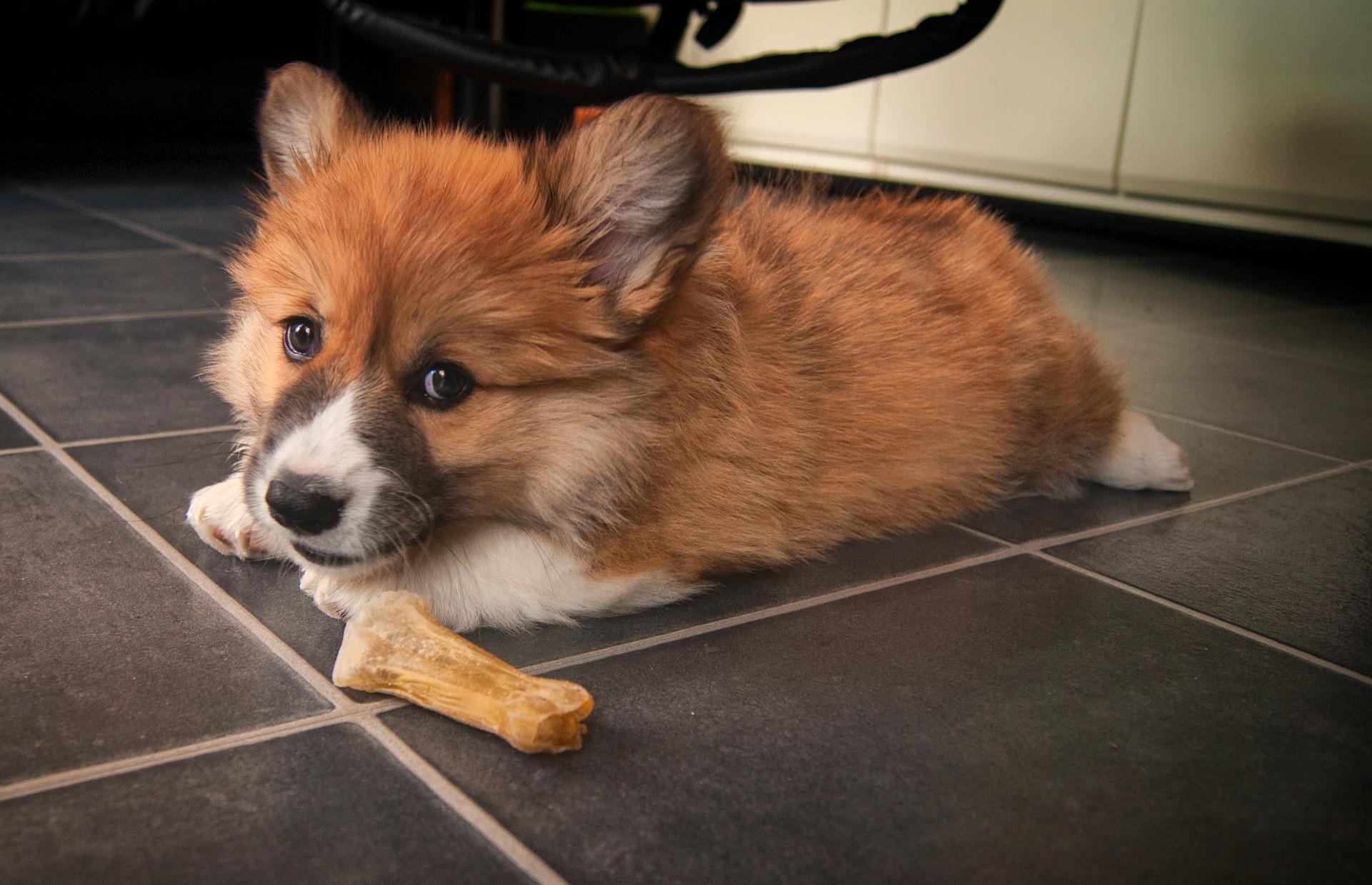What is Splooting in Dogs?


Splooting in dogs is a relatively new term for an ancient phenomenon. It is the process by which an animal can spread themselves out on the ground as flat as possible with their legs outstretched. Social media has been awash with this fascinating phenomenon in the form of videos and photos. The reason these images are so popular is because there is something inherently hilarious about a splooting animal. Their posture looks improbable and, in some ways, almost human. While most of the viral videos are of dogs, it may be something other animals are also capable of.
To find out more, AnimalWised not only answers the question what is splooting in dogs? We also look into why dogs sploot, whether splooting is bad for dogs and what other animals sploot.
What is splooting in dogs?
A sploot is a position which certain animals take up. It involves an animal lying down on their belly and stretching out their legs both in front of and behind them. Dogs can lie down in many different ways, often leaning on their side to curl up and get comfortable. Splooting isn't common in all breeds and not all dogs will choose to sploot. This may not be due to breed, but simple personal preference. Just as some people will sit down on a chair with their legs crossed, in a lotus position or spread out wide, dogs may choose to sploot or not to sploot.
The reason why many people find images or videos of animals splooting so funny is because there is something comical about it. It often contorts their body in such a way that the animal looks a bit dopey or silly. However, it's unlikely dogs do it to get a rise out of heir human companions. There are more practical reasons why dogs and other animals sploot.
Why do dogs sploot?
In the sploot position, the dog's belly is flat on the ground and their legs are extended straight backward. The front legs may be positioned in various ways, sometimes stretched out in front or tucked underneath the body. This position provides certain benefits to the dog and explains why dogs sploot:
- Stretching: splooting is a way for dogs to stretch their muscles, especially in their hip and groin area. It allows them to extend their legs fully, providing a good stretch after periods of inactivity or exercise.
- Comfort: some dogs find the sploot position comfortable, especially on cool surfaces like tile or hardwood floors. It helps them spread their body weight and regulate body temperature.
- Breed and body type: the likelihood of a dog splooting can be influenced by their breed and body type. Dogs with shorter legs and longer bodies, such as Corgis and Dachshunds, are more commonly seen splooting.
- Habit: once a dog discovers that splooting is a comfortable position, they may continue to do it out of habit.
Splooting is generally considered a harmless and natural behavior in dogs. However, it's essential to observe your dog's behavior and ensure that they can comfortably get up from the position without any signs of discomfort or pain. If you notice any issues with your dog's mobility or suspect any discomfort, it's a good idea to consult with a veterinarian to rule out any potential health concerns.

Can all dogs sploot?
Splooting is more commonly observed in certain dog breeds, particularly those with shorter legs and longer bodies. Breeds that commonly sploot include:
- Corgis (Pembroke and Cardigan): Corgis are perhaps the most famous splooters. Their short legs and long bodies make them prone to this stretching position.
- Dachshunds: Dachshunds, also known as wiener dogs, are another breed that frequently sploots due to their unique body shape.
- French Bulldogs: Frenchies are known to sploot, and their adorable positions often capture the hearts of their owners.
- Bulldogs: Bulldogs, like Frenchies, are prone to splooting, and it's not unusual to see them in this position.
- Pugs: Pugs are another breed that may sploot, although not all pugs do it regularly.
- Boston Terriers: Boston Terriers with their compact bodies are known to sploot from time to time.
While the breeds mentioned above are more likely to sploot, it's essential to remember that individual dogs within any breed may or may not exhibit this behavior. Splooting is not exclusive to specific breeds, and you might find dogs of various breeds enjoying this stretching position.
As for breeds that cannot sploot, it's not accurate to say that any breed is entirely incapable of splooting. However, some breeds with specific body types, such as those with long, straight legs and shorter bodies, may sploot less frequently due to their anatomy. In such cases, other stretching positions or behaviors might be more common.
Is splooting bad for dogs?
Splooting itself is generally not considered bad or harmful for dogs. It is a natural and common behavior for some dogs, particularly those with shorter legs and longer bodies. However, there are a few considerations to keep in mind when a dog is splooting regularly:
- Joint strain: dogs that sploot regularly may put some strain on their hip and knee joints, especially if they do it on hard surfaces. While occasional splooting is unlikely to cause issues, if your dog tends to sploot excessively or shows signs of discomfort or limping after doing so, it's best to consult with a veterinarian.
- Underlying health conditions: if your dog suddenly starts splooting excessively or exhibits other unusual behaviors, it could be a sign of an underlying health issue or discomfort. In such cases, it's essential to have your dog evaluated by a veterinarian to rule out any potential health problems.
- Temperature: while splooting can help dogs regulate their body temperature on cool surfaces, it might not be suitable in extremely hot weather. If it's too warm, encourage your dog to lie in a cooler, shaded area to avoid overheating. Discover how to cool down dogs in hot weather with our related article.
- Floor type: be mindful of the surface your dog sploots on. Hard and rough surfaces might cause skin irritation or minor injuries, so providing a soft and comfortable area for them to lie on is beneficial.
As with any behavior, it's essential to monitor your dog's comfort and well-being. If you notice any concerning signs or changes in behavior, consult with your veterinarian to ensure your furry companion stays healthy and happy.
When is splooting in dogs a cause for concern?
In most cases, splooting is not an indication of a health or behavioral problem. However, there are some situations where splooting could be a sign of an underlying issue:
- Joint or muscular problems: excessive or painful splooting could be a symptom of joint issues or muscular discomfort, particularly in the hip or knee area. If your dog seems to be in pain or limps after splooting, it's essential to have them evaluated by a veterinarian to rule out any health problems.
- Injury or trauma: if your dog suddenly starts splooting excessively or avoids putting weight on one of their legs, it could be a sign of an injury or trauma. Immediate veterinary attention is necessary in such cases.
- Behavioral changes: drastic changes in splooting behavior, such as increased frequency or avoiding the position altogether, might be indicative of behavioral issues or anxiety. If you notice significant changes in your dog's splooting behavior, it's best to consult with a veterinarian or a professional dog behaviorist.
- Allergies or skin irritations: splooting on rough or abrasive surfaces might cause skin irritations, especially if your dog has allergies or sensitivities. Providing a soft and comfortable surface for them to lie on can help avoid such issues. Learn more about skin allergies in dogs with our article on canine atopic dermatitis.
As with any behavior, it's crucial to observe your dog for any signs of distress, pain, or changes in behavior. If you have concerns about your dog's splooting or overall health, it's best to seek the advice of a veterinarian to ensure their well-being.

What other animals can sploot?
While dogs are one of the most noticeable animals which sploot, they are not the only one. Cats will often sploot for similar reasons to dogs. Cats in particular love to stretch out in the sun, so splooting in a shaft of sunlight is something many cats will love to do.
Rabbits splooting is not uncommon either. Their long bodies are able to stretch out in this way relatively easily, thanks to their musculature. Rabbits may not be seen to sploot as often as dogs, usually because they are very wary of humans. Splooting means they may not be able to run away as quickly if they sense danger.
Lizards, squirrels, pumas and many other types of animal can sploot. If it has four legs, an abdomen and the inclination, they may be able to do it. All animals need a rest once in a while and sometimes a good sploot is just the trick.

If you want to read similar articles to What is Splooting in Dogs?, we recommend you visit our Facts about the animal kingdom category.







